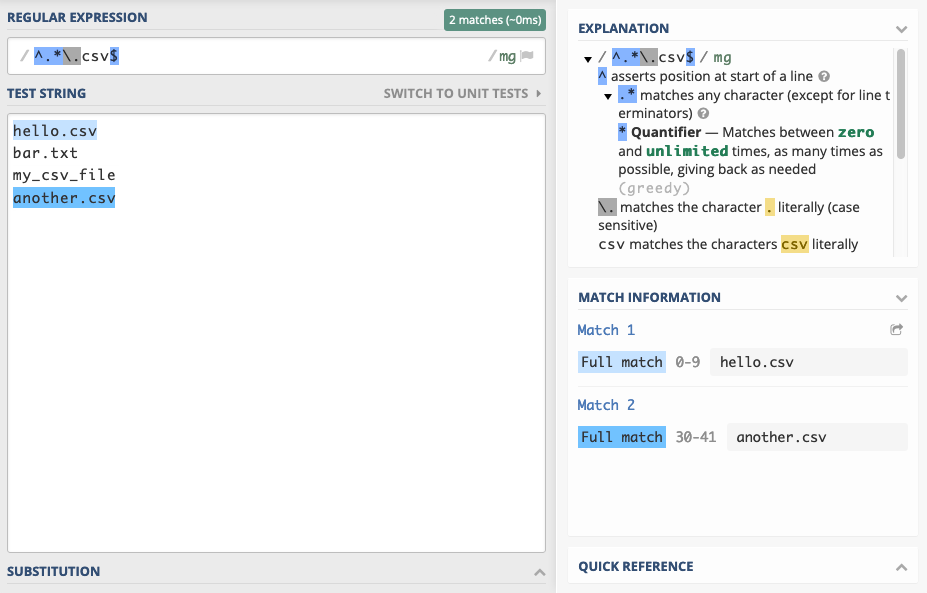
If 1 capture group is used, only its matches are returnedġ+, each element will be tuple of capture groups Portion matched by pattern outside group won't be in output Text matched by the groups will be part of the output


Python also maintains a small cache of recent REĮnsures pattern matches the entire input stringĬompile a pattern for reuse, outputs re.Pattern objectįunction f with re.Match object as argument Output is a re.Match object, usable in conditional expressions

re module functions 🔗 FunctionĬheck if given pattern is present anywhere in input string \0 and \100 onwards are considered as octal values, hence cannot be used as backreferences. Gives named capture group portions as a dict Possible values: \g, \g, etc (not limited to 99) Match non-whitespace character, same as or Ĭustom assertions, zero-width like anchorsīackreference, gives matched portion of Nth capture group defines a range, so this matches any of abcdef characters ^ inverts selection, so this matches any consonant Quantifiers can be applied to literal characters, groups, backreferences and character classes. Appending a ? to greedy quantifiers makes them non-greedy, i.e. Greedy here means that the above quantifiers will match as much as possible that'll also honor the overall RE. Match any character except the newline character \nĬharacter class, matches one character among manyĪny number of characters between pat1 and pat2 FeatureĮach alternative can have independent anchors For example, \^ will match a ^ character instead of acting as an anchor. Prefix a \ character to remove the special meaning and match such characters literally. ^, $ and \ are metacharacters in the above table, as these characters have special meaning. Word characters: alphabets, digits, underscore Restricts the match to the start/end of words Newline character is used as line separator Restricts the match to the start of string Elements that define a regular expression 🔗 Anchors This post is an excerpt from my Python re(gex)? book. Assume ASCII character set unless otherwise specified. This blog post gives an overview and examples of regular expression syntax as implemented by the re built-in module (Python 3.8+). Above visualization is a screenshot created using debuggex for the pattern r'\bpar(en|ro)?t\b'Ī regular expression (or RE) specifies a set of strings that matches it the functions in this module let you check if a particular string matches a given regular expression


 0 kommentar(er)
0 kommentar(er)
